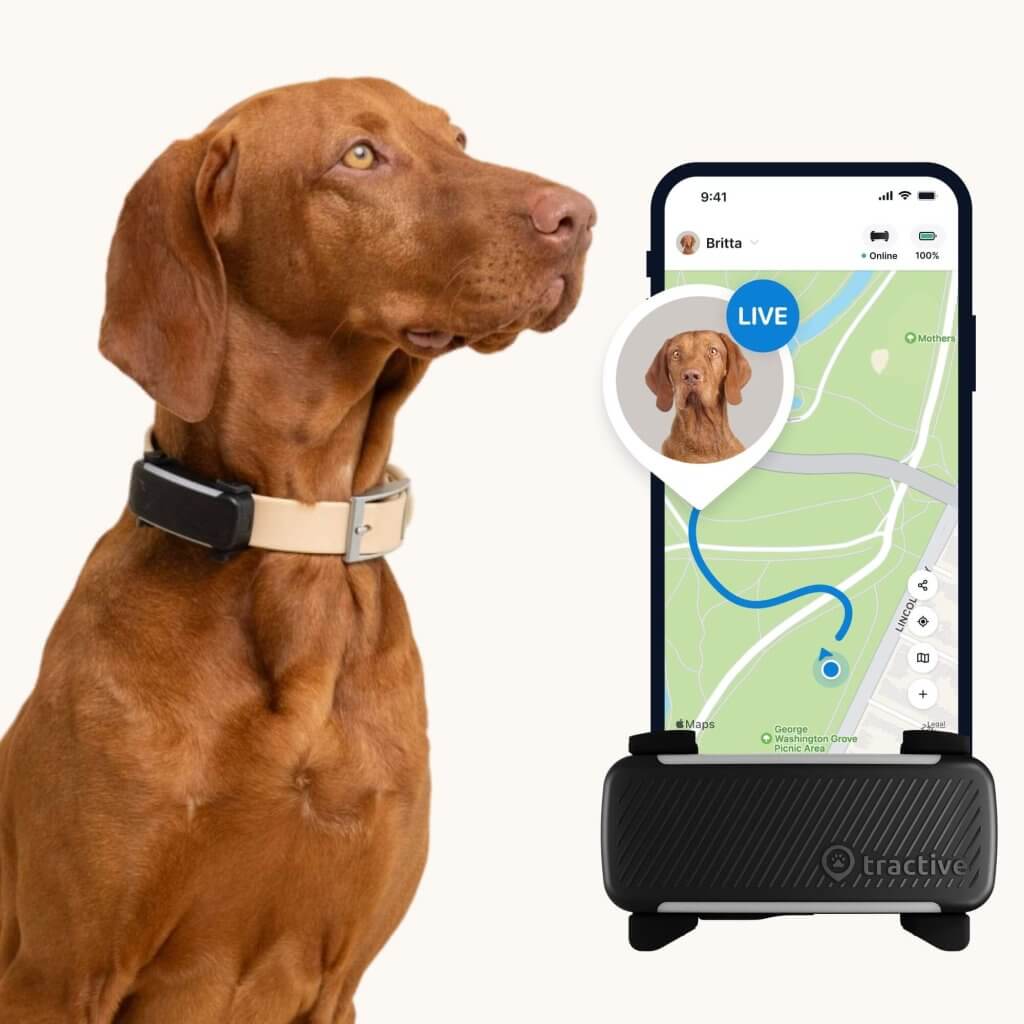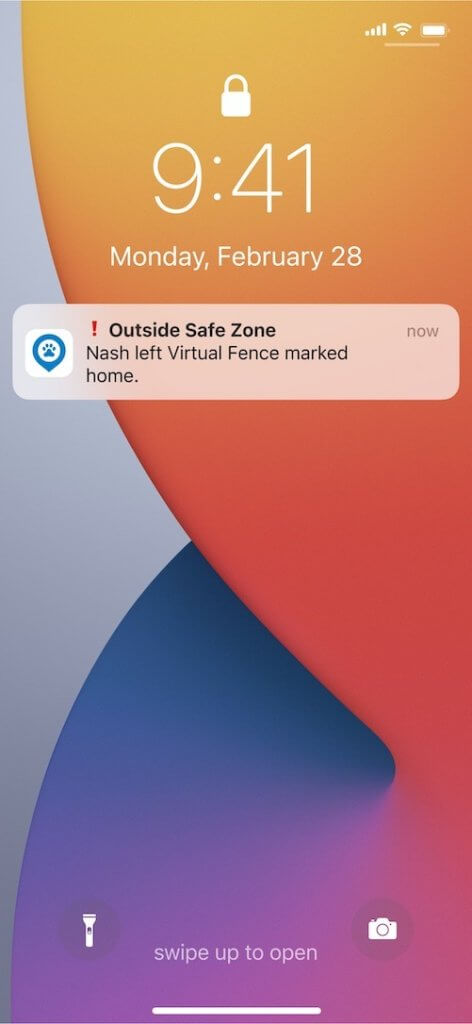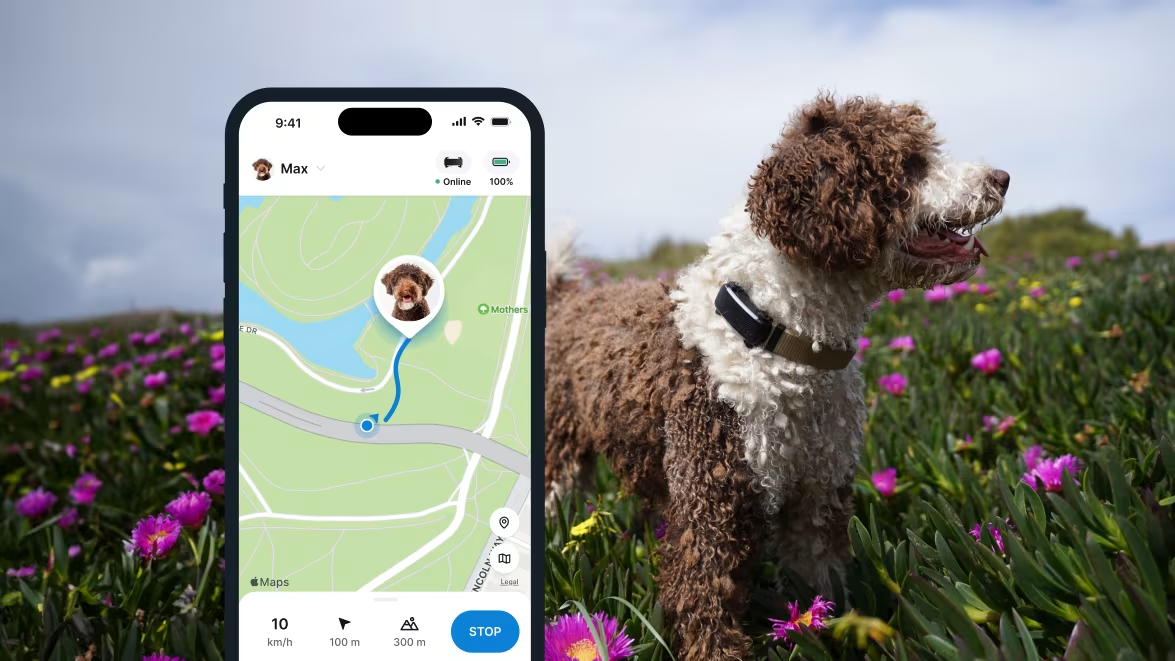Our Top 10 Dog Safety Tips To Keep Your Buddy Safe
From tracking their movements, monitoring their meals, and helping them get enough exercise.
As a loving pet parent, you might’ve wondered how best to stay on top of your dog’s safety and wellbeing. Here are a bunch of dog safety tips for you to stay on top of their safety, health, and wellbeing. To help protect your buddy – and help you enjoy a long, happy, healthy life together. Let’s get started.
Key Takeaways
Keep your dog close when you are out.
You need to keep them on a leash in public so they don’t run away or get hurt. Using a microchip or a GPS tracker is a smart idea.
Teach your dog the important commands.
Commands like “sit” and “stay” can actually save their life by helping you control them near danger or keep them from eating something bad.
Be a detective about food.
Stay aware of which common foods are toxic to dogs – like chocolate, onions, and grapes – and make sure you keep your dog from ever eating them.
Focus on your dog’s daily health.
This means brushing their teeth, making sure they get enough exercise, and noticing if their sleeping or activity habits suddenly change. A dog first aid kit can be a lifesaver during emergencies.

Always know your buddy is healthy & safe
Read more- Key Takeaways
- 1. Keep your dog on a leash in public places
- 2. Never allow your dog to wander off alone
- 3. Teach your dog basic commands
- 4. Stay informed on which foods are good & bad for dogs
- 5. Your dog needs dental care, too
- 6. Keep your dog mentally & physically healthy
- 7. Make a dog first aid kit
- 8. Make sure your dog is getting enough sleep
- 9. Avoid aversive training methods to keep your dog safe
- 10. Prevent your dog from getting lost
1. Keep your dog on a leash in public places
Even if your dog is well trained and well behaved, they might still yank on the leash or rush off to explore some new sight, sound, or smell. Which means they might get lost, dognapped, injured by a passing car, or worse. Walking your dog on a leash in public might even be required by law in some countries. Make sure to check your local laws and ordinances to see if this applies to where you live.
Besides, younger, untrained dogs are more likely to yank at the leash or run away. Similarly, dogs with separation anxiety might get spooked by a passing car, or other people (or dogs) and bolt off away from you while out on a walk. With your dog on a leash, you have control over where he or she goes. A leash also allows you to keep your pet away from people, or other animals, who may be afraid of dogs.
Read more: How to put on a dog harness in just 7 steps.
2. Never allow your dog to wander off alone
Letting your dog walk off leash has a ton of benefits. But even so, we’d recommend keeping an eye out for where your dog is off wandering. Aka, dog safety tip #2: never allow your dear pup to walk away without you. A free range dog might be more likely to get dognapped. Or your neighbors might not take well to them wandering around their backyard.
So we’d recommend starting by:
- Getting your dog microchipped.
It’s like a permanent ID card for your dog – and a swift, painless procedure. With it, a helpful stranger can find your lost dog, take them to a vet, and identify your dog by scanning their microchip. - Attaching a dog GPS tracker to your buddy’s collar.
Specifically, one that lets you track your dog in real-time, over an unlimited range. Or which alerts you if your dog has wandered past a “safe zone.” So your dog can enjoy their outdoor wandering and you can track them with just a glance at your phone – stress-free.

Follow your dog anywhere
Get real-time location information, wherever they go. And find out when they try to make an escape, or just when they go somewhere they shouldn’t, with Virtual Fences.
3. Teach your dog basic commands
Younger, untrained dogs are more likely to bolt, tug against the collar, or run away. But with just 5-10 minutes of basic obedience training per day, you can help keep your dog safe. Besides, basic training can help your dog be more of a good canine citizen – and it endears you in the eyes of pet parents around you. You can also keep your dog safe indoors by training them the “leave it” command when you see them picking up something chewable – and potentially dangerous. (Like wires, scissors, glue, or medicine.)
4. Stay informed on which foods are good & bad for dogs
You probably know that chocolate is dangerous for dogs – but did you know that your kitchen might be full of foods toxic to them? Like, for example, onions, garlic, grapes, raisins, salt, nuts, mushrooms, tomatoes – and many, many more. So our next dog safety tip covers nutrition: some of these foods might just make your dog sick, while others can be fatal even in small amounts. So as a responsible dog parent, make sure to stay on top of foods are absolutely off-limits for your dog – and what to do if you suspect your dog might’ve taken a nibble out of something they shouldn’t have.
5. Your dog needs dental care, too
Just like you, your dog can suffer from gum disease, tooth loss, and tooth pain. And just like you, regular brushing and oral cleanings help keep your pet’s teeth strong and healthy. Many dogs show signs of dental disease by age three, leading to loose teeth, and chronic pain.
So in addition to regular dental cleanings by your vet, consider giving your dog a regular teeth cleaning. Owner care includes brushing, oral rinses, and dental treats. Your vet is a good source of information about brushing techniques and dental care.
6. Keep your dog mentally & physically healthy
Healthy dogs need to stay both mentally active and get enough daily movement. Most dogs will benefit from 2 exercise sessions a day. Off-leash exercises in the garden, playtime in the park, swimming, running and walking are all perfect ways to keep them in shape.
Read More: 13 Fun Games For Dogs (For When You’re Cooped Up Indoors)
7. Make a dog first aid kit
A dog first aid kit is very important to have at home or to bring when you go on holiday. Like, for example, if you’re out hiking with your dog and they injure themselves chasing a woodland animal. Your kit should include the same kinds of things you would expect in a kit made for humans. Like, for example:
- Gauze
- Medical tape
- An antiseptic product
- Hydrogen peroxide
- A thermometer
- Your pet’s medical records,
- and your contact information for their vet and nearby emergency clinics.
💡 Keep your pet’s first-aid kit in your home and take it with you if you are traveling or out hiking with your dog.
8. Make sure your dog is getting enough sleep
Much like us, dogs also need enough sleep to ensure they’re healthy and strong. In fact, one of the most common signs of Cognitive Dysfunction Syndrome (CDS) in dogs is a change in their sleep patterns.1 Aka, if your dog seems to be waking up more often during naptime, tossing and turn, or generally seeming restless at night.
9. Avoid aversive training methods to keep your dog safe
All dog parents want to protect their buddies – and some live in remote areas where wandering away from safety can genuinely threaten their dog’s lives. So if you’re one of them, you might’ve considered setting up a physical fence, or investing in an invisible one, or getting your dog a training collar to prevent them from wandering.
⚠️ But physical fences can be pretty expensive to set up and maintain. Besides, your dog can still jump it or dig under it. Vets also strongly discourage the use of e-collars that use static shocks to train your dog. There’s always the risk you’ll cause your dog unimaginable pain – and over time, it can both reduce your buddy’s trust in you or get them to react aggressively in self-defence.
Instead, here’s a smart, humane alternative. A virtual fence. Specifically, one that connects to your dog’s GPS tracker, helps you set up a “safe zone” or a “no go zone” – and just sends you an escape alert on your phone if your dog sneaks past it. (So you can intervene and pick them up right on time.)


No need to shock your dog or train them through any kind of aversive method. With a virtual fence, you can prevent your dog from wandering off – but without compromising their love and trust in you.
10. Prevent your dog from getting lost
Around the world, over 10 million dogs are lost every year. Of these, 15% of lost pets are found because of microchips or tracking technology like GPS trackers.2 With a dedicated dog GPS tracker like Tractive, you can prevent your dog from going missing in the first place.

Take the story of Kathy, an off-leash Beagle who was in the middle of her hunting dog training – and tracked by her dad via her Tractive GPS. Suddenly, he noticed she was traveling at high speeds and way off-course! From her movements, he realized she’d been dog-napped and the kidnappers were driving off with her in their car. Tracking her with Tractive’s LIVE Mode, her dad called the police and after a two-hour car chase had her back in his arms, safe and sound.
Not all dogs might be this lucky. But with a Tractive GPS safely clipped to your dog’s collar, you can locate your buddy – anytime, anywhere, in real-time – with just a glance at your phone.
Read more: Tractive reviews on Trustpilot



